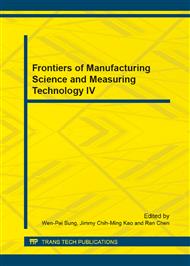p.760
p.767
p.776
p.782
p.786
p.790
p.794
p.798
p.802
A Single-Cell Replacement Strategy on Electronic Array Self-Healing
Abstract:
Embryonic bionic hardware has made great progress since its appearance, while self-healing strategies have some disadvantages. Based on the repair methods scholars proposed, a new strategy on the self-repairing of electronic arrays was presented. The key idea is when cells in the array fail, using spare cells replace them, with no change of the normal cells. This self-repairing strategy contains three parts, that is, an array of working cells, a layer of spare cells and a control layer. The theoretical analysis and simulation results show the new single-cell replacement strategy has the following advantages: easier implementation and largest self-healing capacity.
Info:
Periodical:
Pages:
786-789
Citation:
Online since:
August 2014
Authors:
Keywords:
Price:
Сopyright:
© 2014 Trans Tech Publications Ltd. All Rights Reserved
Share:
Citation:


